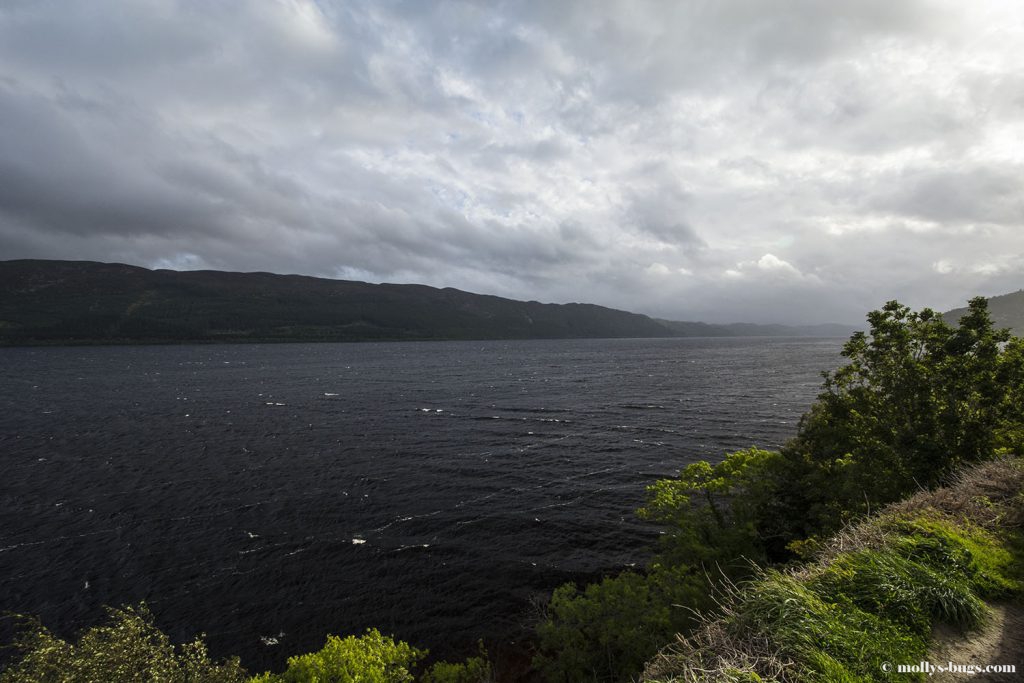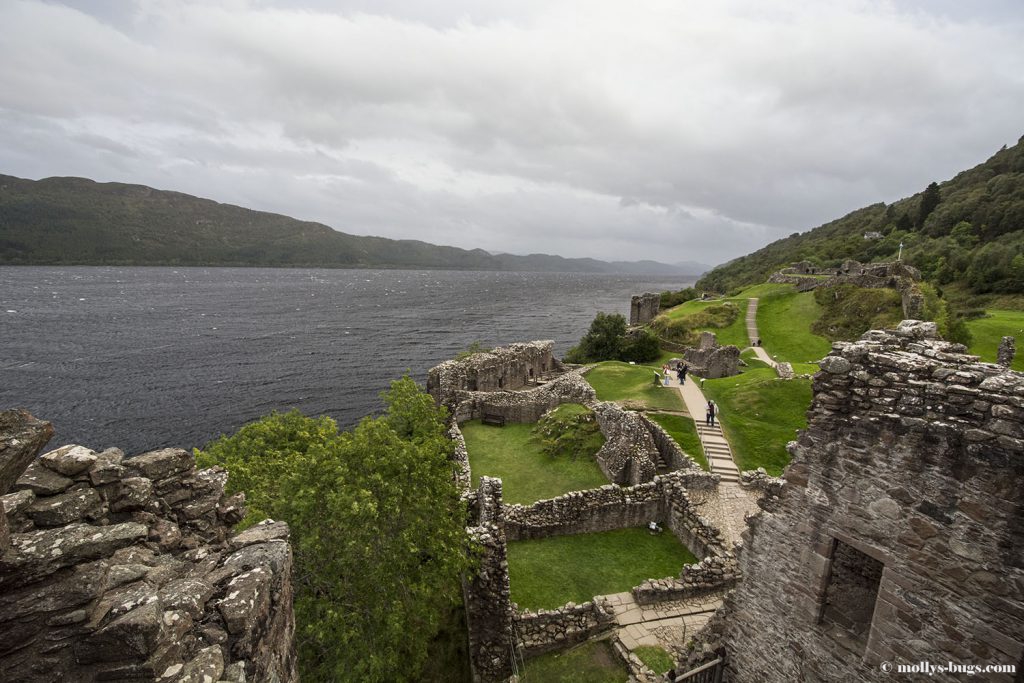Scotland is a country known for its long history and a large number of inventions that made our life easier and more pleasant: a bike, a phone, matches, a refrigerator, penicillin, car tires, a steam engine and lots of other useful things. But there is one more thing Scotland is best known for. It is the lake where a prehistoric monster – Nessie – reputedly lives. This story may sound incredible when you look at calm waters of Loch Ness. But let’s the first things come first and let’s understand where this hard-to-believe story comes from.
- The Great Glen and Loch Ness
- Origin of Loch Ness
- Inverness
- Nessie’s story
- Search for Nessie
- Urquhart Castle
- Glenfinnan Viaduct
The Great Glen and Loch Ness
Origin of Loch Ness
A powerful earthquake that took place about 200 million years ago led to a tectonic fault and split the continent Laurasia. As a result, separate islands were formed: Greenland, Great Britain, Newfoundland, Ireland and Svalbard. After a time, a huge glacier moved upon the territory of present Scotland and its huge weight formed a depression, known today as the Great Glen, and filled all its lakes with freshwater. If you look at a map, you will see a fault line which looks as if someone had cut a line and moved up the entire territory of the Scottish Highlands. The Great Glen bisects the Northern Highlands into the Northwest Highlands and the Grampian Mountains with the UK’s highest mountain – Ben Nevis. The Great Glen is 97 km long from Inverness to Fort William.
Inverness
We started our journey to the legendary lake in Inverness, quite a typical Scottish city. This is the only city in the Highlands. If you keep your way northwards to the Orkney Islands, you will certainly pass through the city. We stopped in Inverness for a while to buy some food at a local supermarket and send a postcard. So, we saw the main pedestrian street with a beautiful statue of the unicorn, the symbol of Scotland.
We were just about 13 miles (20.8 km) from Loch Ness and the legendary Nessie. So we hurried to meet it.
Nessie’s story
The earliest reports of the monster date back to 565 AD and vary greatly. Some describe the beast as a huge frog, while the others tell about a giant horse with a mane. Saint Columba himself, who is revered by all in Scotland (as Saint Patrick in Ireland), mentioned in his biography a huge monster, which he could beat off from the shore by praying. Further reports of the Loch Ness monster are found everywhere. The description got more details century by century, and the beast was eventually identified as a prehistoric aquatic creature – a plesiosaur.
The legend about Nessie was supported by dozens of photos and hundreds of oral stories told by its witnesses. This story came to the point when the Scottish Parliament brought the capture of a mysterious creature to its agenda, but eventually put the issue on the backburner. Researchers and scientists study hundreds of photos alleged as evidence of the monster and find a good half of photos to have been made with Photoshop or similar software tools.
Natural scientists confirm that Nessie’s ancestors lived in freshwater lakes on the territory known today as Scotland. If we take into account the traces of herbivorous sauropods found on the Isle of Skye, which is relatively close to Loch Ness, the plesiosaur’s story seems to be quite credible. The only thing that does not allow us to accept evidence of the existence of this prehistoric animal is lack of photos or videos. Although there are lots of photos on the web, they all seem to be very implausible. Rumours and legends forced scientists to launch a more formal search for Nessie.
Search for Nessie
The search operation Deep Scan costed £ 1 million and was launched in 1987 either to prove or disprove the existence of the ancient animal. Twenty-four boats equipped with sonars were deployed across the width of the lake. They started moving along the entire length of the lake, so the radars literally scanned the loch, which is 37 kilometres long. The signals helped scientists make a picture of what and who is at the bottom of Loch Ness. Such thorough scanning of the lake would seem to give answers to all questions. However, the Deep Scan project raised even more questions than scientists had before the operation. The problem is that Loch Ness is one of the deepest lakes – up to 227 meters in its deepest point. Moreover, there are many caves on the bottom of the lake which have not been studied yet. Local guides say that the lake is so deep that if one could drain off all its water and could fill it with people, the entire population of the Earth would occupy one third of its basin. Believe it or not, but what we know for sure is that scanning of the lake with sonars brought some errors due to the profile of its bottom. The operation recorded three large objects which were not accurately identified by scientists. There could be a group of seals or a stock of salmon or Nessie itself. The problem is that an image produced by sonar equipment shows approximate outlines of items rather than their precise sizes and shapes.
In 2003, BBC scanned the lake once again using 600 sonars and satellite navigation devices. Even the BBC project failed to give a clear answer the question: Does Nessie really exist? The mysterious lake attracts thousands of tourists like a magnet. Everybody hopes to get lucky and capture the aquatic monster. Loch Ness’ fame works well for local business. You can find here a great souvenir store with hundreds of souvenir Loch Ness monsters, a museum to learn the history of lake studies and even a hotel for those who would like to stay for a few days to shoot the monster. You can also order a boat ride on the lake to look out for Nessie. We enjoyed the view from the shore and noted a peculiarity which was proved to be true at the Museum of Loch Ness – stream flows and winds form strange waveforms which can be mistakenly taken as a back or a tail of an animal. Nevertheless, everyone should come here and see the legendary lake with one’s own eyes to decide whether to believe the monster or not.
Urquhart Castle
Ruins of the Urquhart Castle are located on the shore of the lake making the image of the most interesting places in Scotland even more mysterious. The exact date when the castle was constructed is unknown, but the existing ruins date back to the 13th century. It is one of the largest castles in Scotland and, as may be supposed, has a very long history. The castle hosts an ancient catapult used to capture and defend lands. The admission fee is £10 per person. Speaking honestly, you could hardly find something special there, given that such ruins are very common for Scotland, but if you do like such places you should definitely come and learn the castle’s history.
Glenfinnan Viaduct
Moving along the Great Glen we reached its utmost point – the city of Fort William, a closest city to get the UK’s highest point Ben Nevis. And we did it. Another interesting thing is that you can catch a train here to get Hogwarts, a well-known school for Harry Potter’s fans. It was there where an episode for the film “Harry Potter and the Chamber of Secrets” was shot. Most interestingly, Hogwarts is an absolutely real school attended by small Scots. The film made the school very popular. We were not going to get Hogwarts itself, so we decided to look at the amazingly beautiful Glenfinnan Viaduct, which is very old. The construction began in 1897 and finished in 1901. At the time of construction, Glenfinnan was one of the most massive structures made of concrete. It is 380 m long and has 21 arches. The maximum height of the arch is 30 meters. When built, the viaduct was considered to be a very ugly structure, but now it is depicted on the 10 pound banknote and is considered a national treasure. The train Hogwarts Express runs only in the summer from May to September, so if you want to take it, remember its schedule.
This was the end of our journey to the amazingly beautiful Great Glen and we are looking forward to lots of interesting sights ahead! Stay with us!






























Leave a Reply